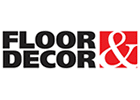By Jim Clanin
Graphics
- Smaller is Better, 10-12KB per image. Having a large image can cause a slow page.
- Always use graphics that fit the content. Just because you have a very cute baby doesn’t mean that it should be your website’s background picture. Choose images that relate to the content of your website.
- Do not use images that make people nauseous. In other words don’t use images that blink, move, change, rotate or flash on your page. Or use them sparingly. Flashing graphics have been proven in studies to be distracting and annoying to people
Layout
- Stick with standard layouts. The reason that the 3-column layout is so popular on websites and newspapers is because it works. You might think it’s boring, but you’ll keep more readers if you stick with something simple that they can understand.
- Whitespace is just as important in a Web layout as it is in a paper layout. Be aware of how whitespace effects how the content of your web page is viewed.
- Use your graphics in your layouts. Use graphics as actual elements in layouts.
Fonts
- Serif for headlines and Sans Serif for text. You should use Serif for headlines and sans serif for text. These fonts are easy to read on computer screens.
- Limit the number of different fonts. Limit your use of different fonts. Using too many fonts makes your site amateurish.
- Use standard font families. Stick with fonts like Verdana, Geneva, Arial, and Helvetica. They may seem boring but will be viewable on most people’s browsers.
Advertising
- Limit your ads. Don’t be greedy. Yes, it’s important to make money from your website, but too many ads will drive people away.
- Keep ads small. Treat them like any other image you would use on your site, avoid blinking/flashing images and keep them relevant.
Remember Your Audience
- Test your pages in multiple browsers. Don’t assume that your website will work on all browsers.
- Test your pages in multiple operating systems as well. Make sure your site is viewable in all operating systems. Just because your site works in IE 6.0 for Windows doesn’t mean it will work for Firefox on a Mac.
- Write what they want to read! Make sure your content covers topics that your readers want to read.








